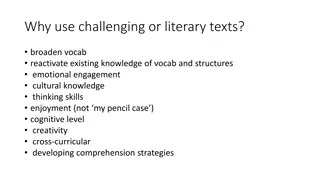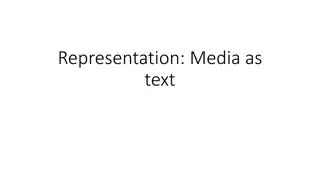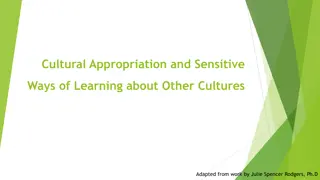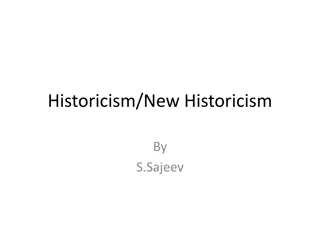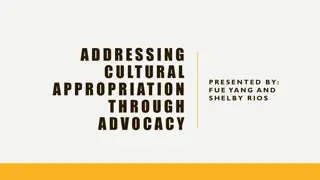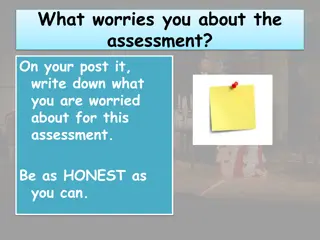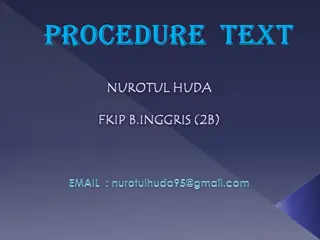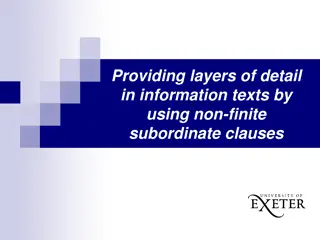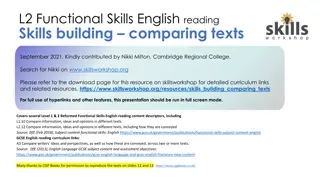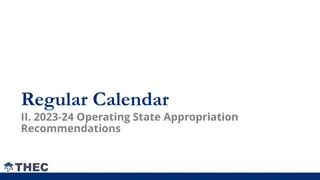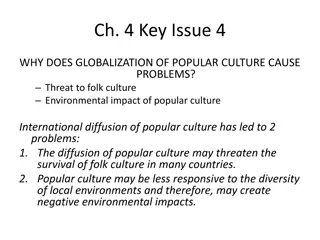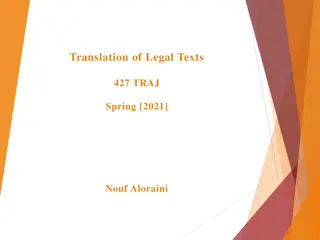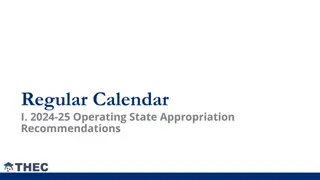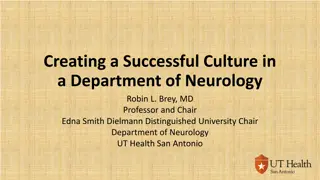Exploring Texts, Culture, and Value Through Appropriation
In Year 11 Extension 1, students delve into texts from the past and their influence on present culture. They analyze the relationships between texts and culture, language's impact on values, and different responses to texts. Through close study, they explore key texts from the past, examining how they are valued in various contexts. The module encourages critical evaluation of texts in different media, fostering imaginative compositions that connect past and present. The concept of appropriation is central, allowing for the adaptation of text elements into new contexts, offering fresh perspectives and revealing contextual disparities.
Download Presentation

Please find below an Image/Link to download the presentation.
The content on the website is provided AS IS for your information and personal use only. It may not be sold, licensed, or shared on other websites without obtaining consent from the author. Download presentation by click this link. If you encounter any issues during the download, it is possible that the publisher has removed the file from their server.
E N D
Presentation Transcript
Year 11 Extension 1 Texts, Culture And Value
Texts, culture and value From the rubric: Students explore the ways in which aspects and concerns of texts from the past have been carried forward, borrowed from and/or appropriated into more recent culture. The module develops students understanding of how and why cultural values are maintained and changed
From the rubric: Students examine a key text from the past and its manifestations in other contexts and media. Through close study they: consider the relationships between the text and its culture explore the language of the text and examine the ways in which language shapes and reflects values consider the effects of different ways of responding to the text consider the ways and reasons the original and later manifestations of the text or aspects of the text are valued.
Students also explore, analyse and critically evaluate different examples of such texts in a range of contexts and media, including texts of their choosing. Students develop a range of imaginative, interpretive and analytical compositions, including some which explore the relationships between key texts from the past and texts in more recent culture. These compositions may be realised in various forms and media. Students investigate topics and ideas, engage in independent learning activities, and develop skills in sustained composition.
Appropriation Consider the following famous quotes: Imitation is the highest form of flattery. Charles Coulton. We are part of all we have met. Alfred Lord Tennyson For last year s words belong to last year s language / And next year s words await another voice. T.S Eliot
Appropriation is the adaptation of a text by transferring aspects of it into a different context. Aspects that may be appropriated include: Plots or plot elements Characters or character tropes Symbols, images and metaphors Themes and values Appropriation allows new insights into the original text. It also allows the new composer to reveal the differences between the context of the original text and the context of the new text.
Can you think of any appropriations you are already familiar with?
Appropriation of plots into a different context: Hamlet = The Lion King, Sons of Anarchy Romeo and Juliet = Westside Story, Romeo + Juliet, High School Musical, Glee, The Lion King 2, Gnomeo and Juliet Emma = Clueless Appropriation of characters/character tropes into a different context or plot: Dracula = Nosferatu, The Lady of the House of Love Buffy vs. Dracula (season 5, episode 1 of Buffy the Vampire Slayer) Textual responses to or reworkings of original texts: The Odyssey = The Penelopiad, O Brother, Where Art Thou? The Wizard of Oz = Wicked Pride and Prejudice = Pride and Prejudice and Zombies, Lost in Austen
Read The Tyger by Henry Blake (1794) and consider how it reflects concerns about the nature of God as Divine Creator. Then read Tiger Tiger by Gordon J. L Ramel and analyse how it appropriates Blake s poem to convey a modern attitude to the tiger and contemporary concerns about the environment.



